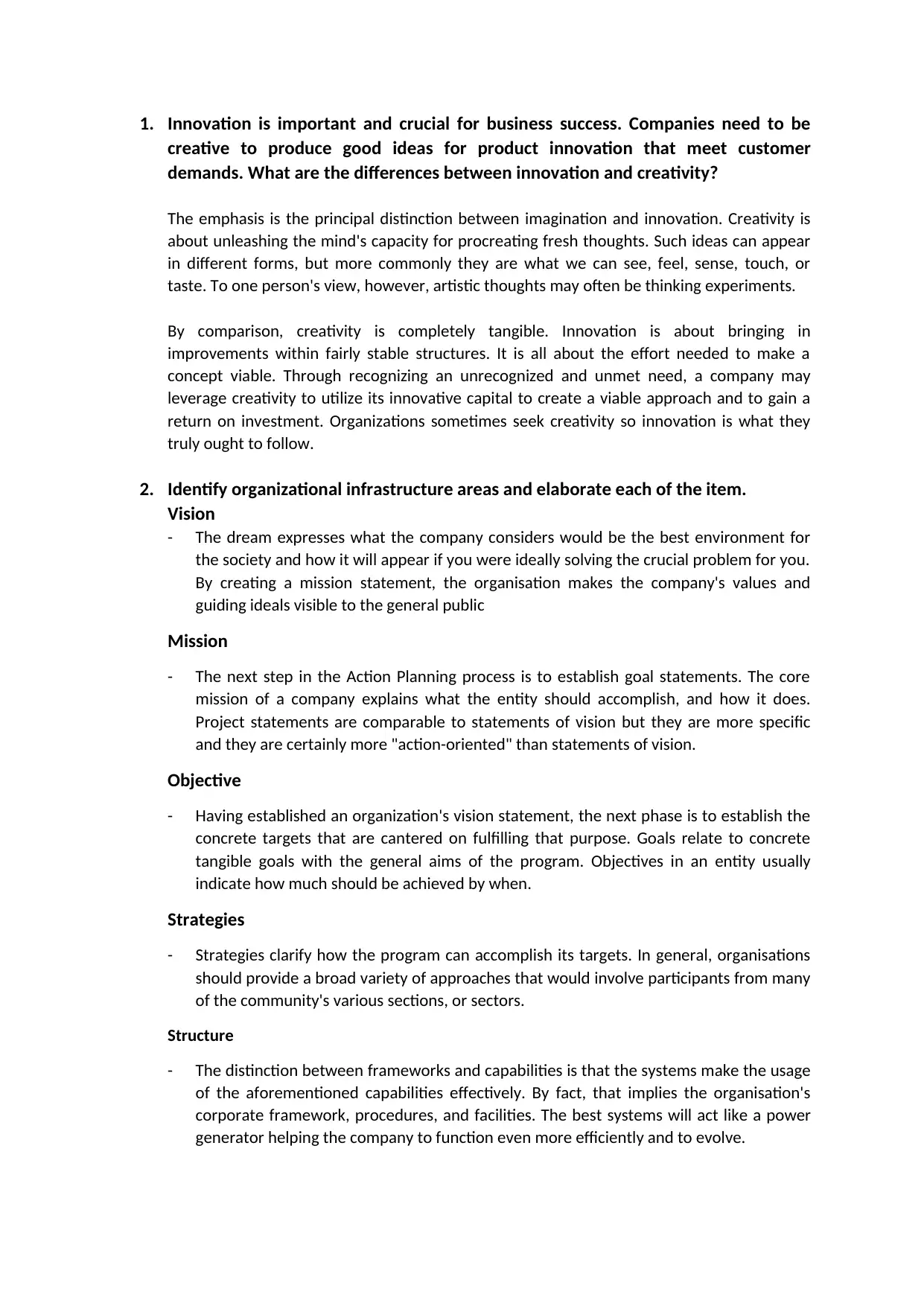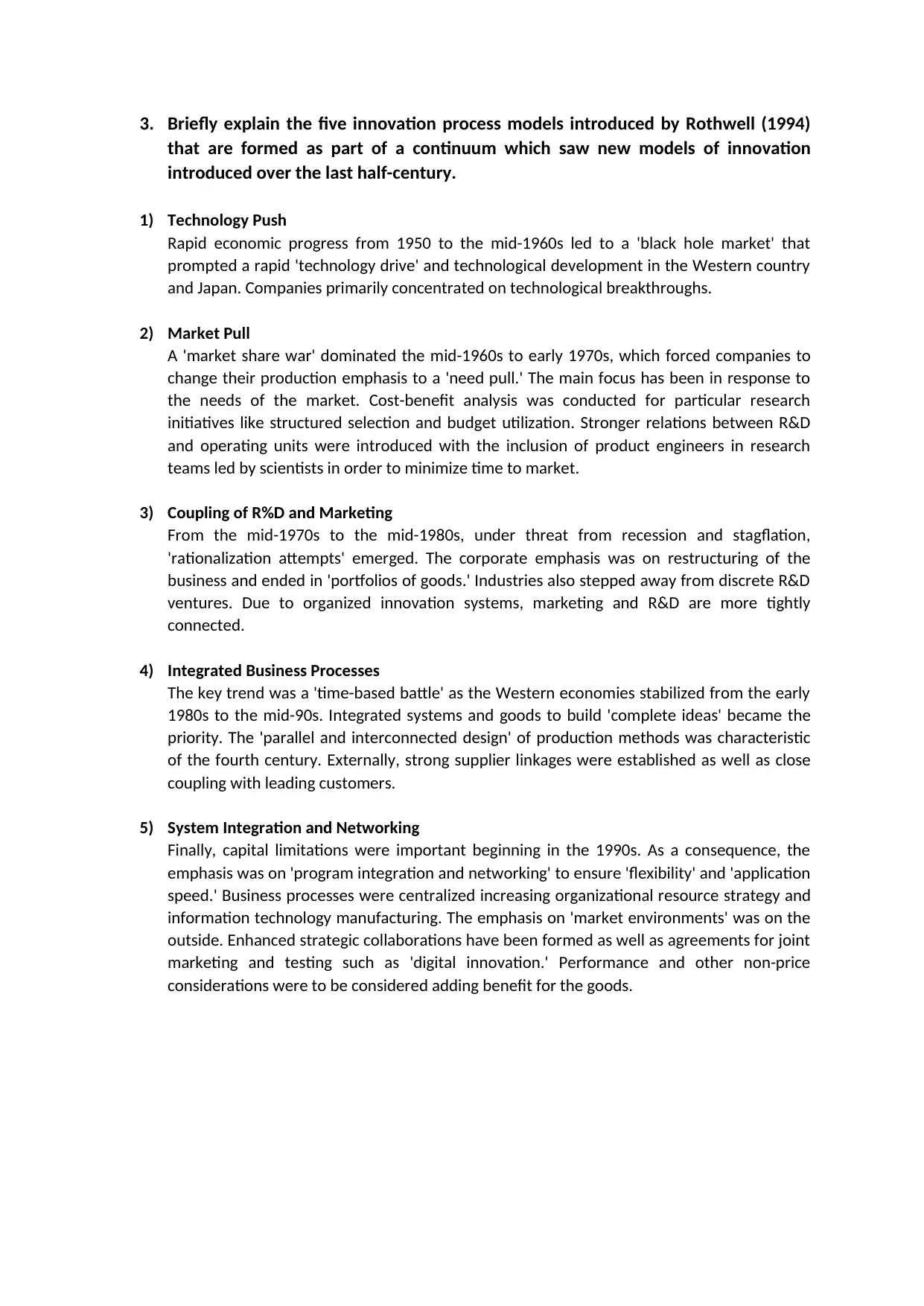Innovation, Creativity, and Rothwell's Innovation Models Report
VerifiedAdded on 2020/11/13
|2
|849
|370
Report
AI Summary
This report delves into the crucial differences between innovation and creativity, highlighting their roles in business success. It emphasizes the distinction between generating new ideas (creativity) and implementing them for improvement within stable structures (innovation). The report identifies key organizational infrastructure areas, including vision, mission, objectives, strategies, and structure, and explains their significance in fostering innovation. Furthermore, it examines Rothwell's five innovation process models: technology push, market pull, coupling of R&D and marketing, integrated business processes, and system integration and networking, providing insights into the evolution of innovation strategies over time. This analysis provides a comprehensive understanding of how businesses can leverage creativity and innovation to achieve sustainable growth and meet market demands.
1 out of 2


![[object Object]](/_next/static/media/star-bottom.7253800d.svg)